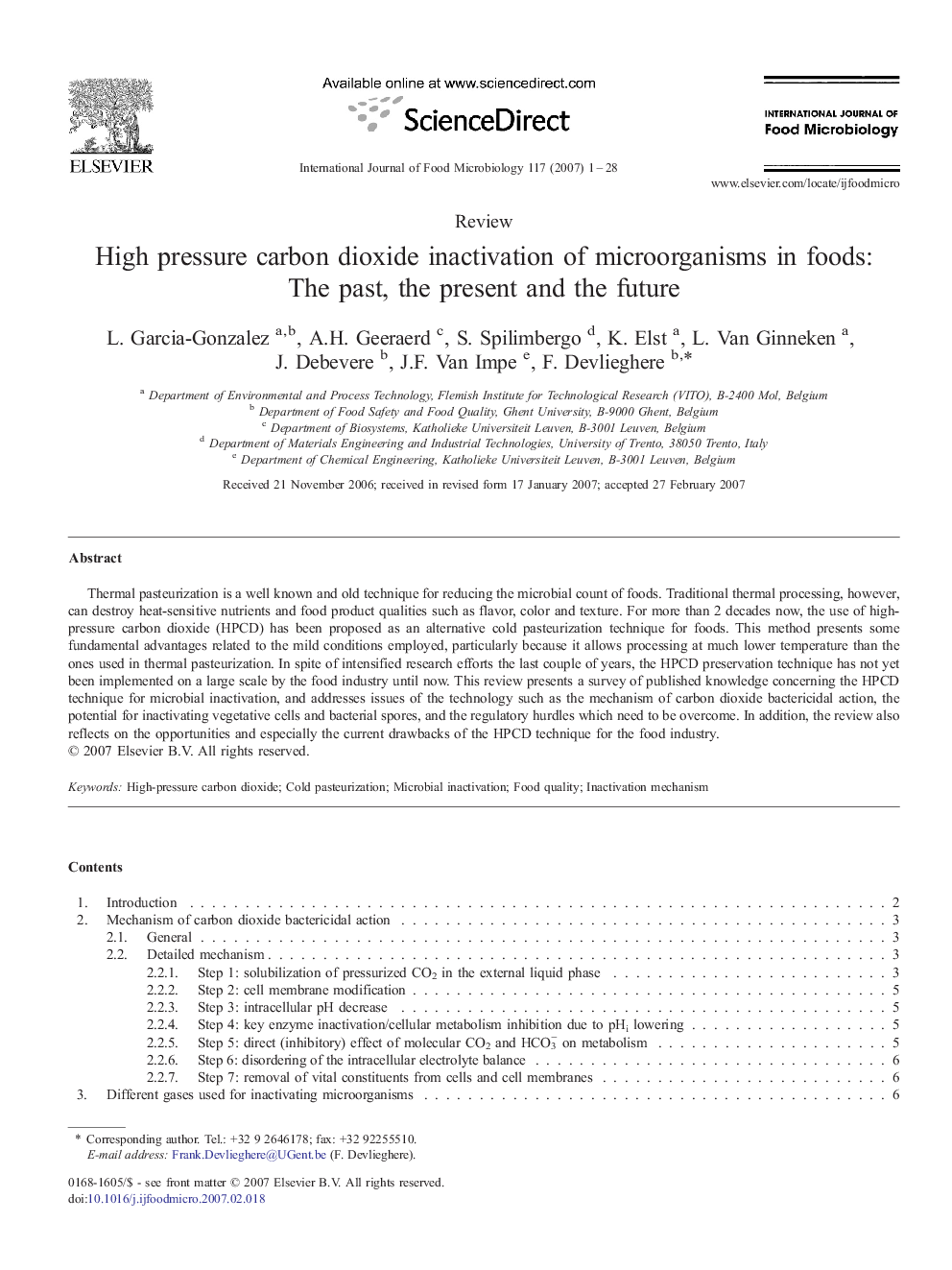| کد مقاله | کد نشریه | سال انتشار | مقاله انگلیسی | نسخه تمام متن |
|---|---|---|---|---|
| 4369859 | 1616744 | 2007 | 28 صفحه PDF | دانلود رایگان |

Thermal pasteurization is a well known and old technique for reducing the microbial count of foods. Traditional thermal processing, however, can destroy heat-sensitive nutrients and food product qualities such as flavor, color and texture. For more than 2 decades now, the use of high-pressure carbon dioxide (HPCD) has been proposed as an alternative cold pasteurization technique for foods. This method presents some fundamental advantages related to the mild conditions employed, particularly because it allows processing at much lower temperature than the ones used in thermal pasteurization. In spite of intensified research efforts the last couple of years, the HPCD preservation technique has not yet been implemented on a large scale by the food industry until now. This review presents a survey of published knowledge concerning the HPCD technique for microbial inactivation, and addresses issues of the technology such as the mechanism of carbon dioxide bactericidal action, the potential for inactivating vegetative cells and bacterial spores, and the regulatory hurdles which need to be overcome. In addition, the review also reflects on the opportunities and especially the current drawbacks of the HPCD technique for the food industry.
Journal: International Journal of Food Microbiology - Volume 117, Issue 1, 10 June 2007, Pages 1–28